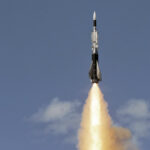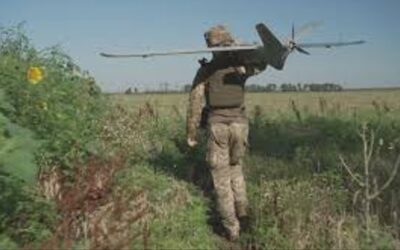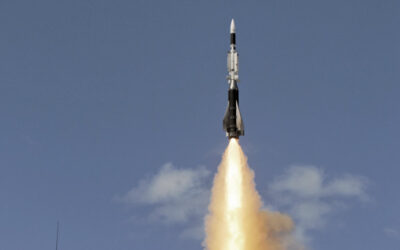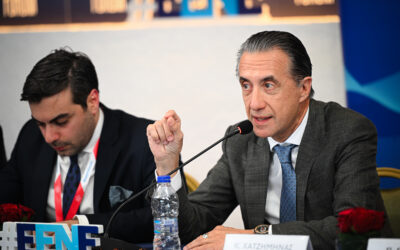Kiev is increasing spending by 15.5 billion hryvnias (367 million euros) to bolster Ukraine’s armed forces with drones, according to…
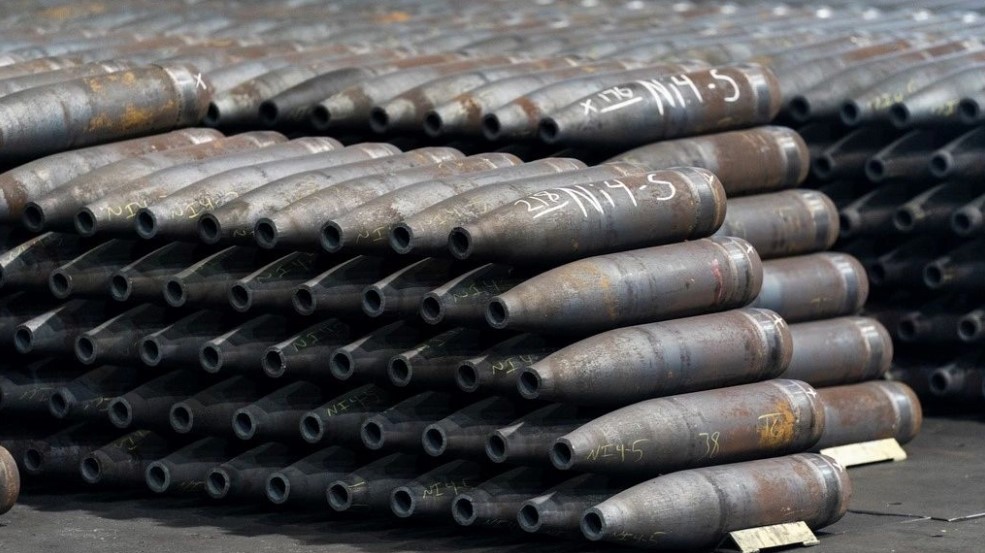
In 2023, global military spending set a new record for the ninth consecutive year, according to research by SIPRI, the Stockholm-based International Peace Research Institute.
Military spending in real terms, excluding inflation, rose by 6.8% in 2023 to $2.44 trillion dollars compared to 2.24 trillion in 2022, mainly because of the war in Ukraine.
This is the largest annual increase since 2009, the Institute underlines. All 10 countries with the highest military spending in the world have greatly increased their expenditure; the Russia-Ukraine war is seen as the main reason for their spectacular rise.
All study areas showed an increase, which reveals that people feel less safe and are likely to resort to harsh measures for their security rather than diplomatic means, SIPRI researcher Lorenzo Scarazzato told the German Agency.
Many governments take into account the escalation of tensions and instability and in turn increase their military spending, above all the European ones, after the invasion of Ukrainian territory by the Russian Army in February 2022, he explained.
The US remains by far the world’s number one, with military spending reaching $916 billion. This is more than a third – 37% – of global military spending and roughly three times that of the second-ranked country: China.
Beijing spent an estimated $296 billion on China’s Armed Forces, or about 12 percent of global military spending, up 6% on a year-on-year basis, according to the Institute. In other words, the US and China accounted for almost half of global military spending last year.
Also read: SIPRI | Nuclear arsenals are growing again
The top seven countries in the ranking still rank the same since 2022, according to the report. Russia is still in third place, followed by India and Saudi Arabia. Germany ranked 7th, just behind Britain.
Berlin is often criticized because its military spending has not yet reached 2% of its GDP, the NATO target, SIPRI researcher Skarazzato noted. However, one must take into account that Germany is the country with the second highest military expenditure in the Old Continent, following Britain, and that the percentage of its expenditure in 2023 was 1.5% of GDP, yet it has pledged to increase it to 2% as of 2024.
Global military spending reaches 2.3% of global GDP. The largest percentage increase in the top ten rankings was recorded in Ukraine: 51% with spending reaching $64.8 billion. From 11th in 2022, Ukraine ranked 8th in 2023. Military spending accounted for nearly 60% – 58% to be exact – of its total government spending.
The figure is much higher than that of Russia, where military spending accounted for 16% of total public spending expenses. Other countries have provided Kiev with at least $37.3 billion in military aid. Ukrainian military spending and foreign aid is estimated to account for 91% of Russian military spending.
In Russia, military spending rose by 24% to $109 billion in 2023, SIPRI estimates.
Also read: SIPRI | Military spending in Europe peaks since the Cold War
READ MORE
Russia | Cluster bombs hit residential area in Odessa
Images from Russia’s strike in the heart of Odessa, which hit the so-called “Harry Potter Castle”, a former politician’s mansion now…
France | Industries prioritize orders of anti-aircraft missiles
The Armed Forces Ministry of France has instructed industries involved in the production of Aster anti-aircraft and anti-ballistic…
Hellenic Entrepreneurs Association | Ideas & Positions for the Promotion of Greek Entrepreneurship
The members of the Hellenic Entrepreneurs Association (E.E.N.E.) participated in a roundtable discussion entitled “Ideas, Positions…
Ukraine | Increase in defence spending by 367 million euros for the acquisition of drones
Kiev is increasing spending by 15.5 billion hryvnias (367 million euros) to bolster Ukraine’s armed forces with drones, according to…
HMoND | The legislative initiative for HCDI is under consultation
The legislative initiative of the Ministry of National Defence, under the title: “Establishment of the Hellenic Center for Defence…
Russia | Cluster bombs hit residential area in Odessa
Images from Russia’s strike in the heart of Odessa, which hit the so-called “Harry Potter Castle”, a former politician’s mansion now…
France | Industries prioritize orders of anti-aircraft missiles
The Armed Forces Ministry of France has instructed industries involved in the production of Aster anti-aircraft and anti-ballistic…
Ecuador | Appeals to International Court of Justice denouncing Mexico
Ecuadorian police stormed the Mexican embassy hours after the Mexican government granted former Vice President…












